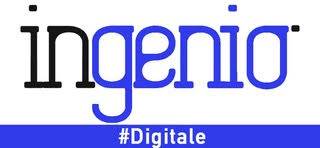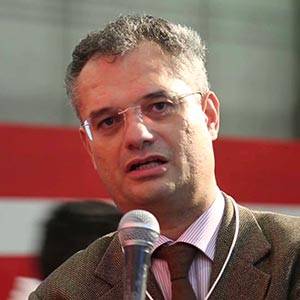TESTING THE VALUE CHAIN OF THE INFORMATION FROM BIM AND BEM
The BIM software used as starting point in this research work is Autodesk Revit, a widely used BIM platform in the professional and research field of construction and digitalization of the design, construction and operating phase of a building life cycle.
From: STUDIES AND RESEARCH – V.34, 2015
Graduate School in Concrete Structures – Fratelli Pesenti
Politecnico di Milano, Italy
ABSTRACT
Building Information Modelling (BIM) allows realizing the architectural and MEP project, managing the building construction and costs and planning the future maintenance procedures. Additional values can be introduced in the BIM model adding information and the energy behavior described through Building Energy
Modeling (BEM) is a crucial point that should be controlled by energy manager or owners during the building lifespan. The problem is not trivial however, the way to analyze and quantify the energy quality of the building can become part of energy contracts in future and guarantee of the energy consumption of the building and the reliability of the evaluation is the basis to avoid legal disputes in a building where untrusted predictions have been performed. Procedures and tools to minimize the energy discrepancy between energy prediction during the project phase and actual energy consumption in the running phase are crucial for energy assurance implementation in the future. An extensive work has been conducted to test procedures in a trial and error process including different complexity of models and different software for interoperability between Revit Models and energy simulation software. Potentials and weakness of the different possible workflows and results have been compared and discussed. Quality criteria have been used to define the value chain of the information transferred from BIM to BEM.
1. INTRODUCTION The use of digital methods to manage the design process allows the integration of multi-objective analyses (Asadi et al., 2012) (i.e. architectural, structural, MEP, energy modelling) into a main chain of information enhancing the effectiveness and the accuracy of the design, construction and management processes. Compared evaluation of multi-options scenarios and crosschecks between disciplines on a same BIM model (Building Information Model) can reduce time and cost due to variants and adjustments in the construction site. The aim to prevent inconsistencies occurring in the standard design process led the BIM into the limelight in the public procurement as is explicit in the European Directive 2014/24/UE, art. 22/4 that states: “For public works contracts and design contests, Member States may require the use of specific electronic tools, such as of building information electronic modelling tools or similar…”. Thus, the BIM model adopted to manage the whole building process in a widesense life cycle approach includes additionally the energy management of the building. The energy item should be included in the BIM model since it is could be a key factor in the building contracting. Northern European countries commonly use the BIM model to manage public contracts and it is widely used at national level; however, a dissemination phase is still required. BIM tools enhance and optimize the interconnections between actors and stakeholders of a project allowing the rationalization of the different phases: design and programming, project management, construction, operation, maintenance and budget (East et al., 2013). In term of energy efficiency BIM is a powerful tool to include the control and reduction of the energy consumption of the building during the design phase and running phase reducing related costs and environmental impacts. The building energy compliance to evolving regulation going towards more and more restrictive thresholds of consumption during the lifespan of the building needs powerful tools that redraw the building status when maintenance changings occur. If there is an envelope improvement and/or a HVAC system replacement as well the requirement to provide energy retrofit measures, the possibility to run a Building energy Model (BEM) connected to BIM information is crucial both in existing and new constructions. The housing crisis shifted the focus of the building sector from new construction to existing assets. International studies about energy retrofitting show the benefit of benchmarking in improving the energy efficiency during time. Benchmarking is the collection, comparison and sharing of building energy use data and ratings and can lead to an improvement of energy saving about 7% in few years (Vancouver Council, 2014; IEA-ECBCS, 2011). The residential and tertiary buildings have the considerably weight of 40% in the final energy consumption of the European Union (Directive 2010/31/UE). Energy reduction of about 30% of energy consumption of the building sector is mandatory in European directives to reach the 20-20-20 Climate-Energy Package (Directive 2009/87/EC) objectives. Moreover, energy and environmental policies require greenhouse gas emissions reduction by at least 40%, a growing renewable energy production and energy efficiency by 27% (European Commission, 2030 Framework, 2013). The main field of implementation for energy efficiency implies measures in the new constructions as in the renovation construction sites. The rate of renovation of the complete building stock is 1.1% and the existing building interested by retrofit is about 1.8% (Ascione et al., 2012). Moreover, renovation strategies have to base on cost-optimality criteria (BPIE, 2010). Thus, a tool in which design, construction, costs, maintenance procedures and energy enhancement is crucial to manage efficiently the asset. The connection and interoperability of BIM to BEM is accordingly a key point to share information and results for purposes development between the experts in the involved fields (Figure 1). Furthermore, the reliability of the energy simulation and result is a further issue when energy requirements are part of a sale or rent contract; nowadays the energy certificate of a building or an apartment is mandatory in these kind of transactions. The standard procedures of certification are not enough comprehensive to provide a reliable vision of the energy behavior of the building. This is affected indeed by construction changes, lack of information, consumption variability due to occupants and a flexible tool including such variables and capable to manage those during time can be provided by BIM model also connected to the monitoring phase in the running period.

2. FROM THE BUILDING INFORMATION MODELING TO THE BUILDING ENERGY MODELING The BIM federated model can be the information base or the main database of the data allowing designers to perform structural, MEP, energy analyses. According to BIM uses, the expansion of the input requirements allows to cover the more fields of knowledge. An effective BIM to BEM workflow eases the reducing of data losses, and the correct flow of information to simulate energy performance. The information are embedded in the building information model according to the different stages of the project to provide level of details accordingly to variable objective (COBIM 2012, Series 10). The option to use the same information included in the BIM into the BEM gives a robust guarantee in minimizing discrepancies and losses of information between the two models and the energy analysis. The requirement to implement the information usually embedded into the architectural model involves as first the cooperation in the architectural teamwork of the energy analyst from the first starting phase of the design with positive values and upgrading of the model with energy related information such as:
a) thermo-physical characteristics of the envelope materials; b) specification of window energy performance; c) space use to identify homogeneous thermal zones; d) thermal loads due to the specific use of the different thermal zones; e) ventilation rates of the thermal zones (per occupant or space size); f) set point temperatures of the thermal zone; g) HVAC systems for the building and for each thermal zone (sub systems).
Additional information related to energy issues could be the embodied energy for each material used in the envelope, the detailed data sheet for specific nonstandard products (e.g. phase change materials, membranes, etc.) that can be useful to qualify the energy model and the project itself; however, this information has to be post-processed in the BEM modelling phase. The relevance of a unique structured container of information is the basis to organize and share set of data fitting the concerned parts. BIM easily allows the comparison of system configurations, the computation of components (e.g. pipes, plants, etc.) by metric automatic calculation; data sheets can be connected to the HVAC plant components or other elements of the main project. The BEM simulation can be a resilient criterion in the whole decision process, when energy saving strategies to pursue economic targets are included. The paper provides a list of BIM to BEM workflows with commercial available software to provide enlightenment about the data interchange process. The research work aims in identify the most promising interoperability paths. The methodology adopted is explained in the following section 3 in which the interoperability paths are discussed.
3. METHODOLOGY The adopted methodology focuses on BIM software and BEM software underlining the information transferred from an architectural/MEP/structural model to a complex energy model. Currently, building energy models include some information in the 3D model using attributes to qualify in term of thermal performance the materials and constructive components used to get the stratification of the envelope of an architectural volume. However, a lot of information that can characterize in a specific way the architecture of the building and thus are obviously included into the BIM model cannot by suitable for the information transfer and simulation into the energy model. As an example, some cladding systems could enhance the image of the model providing a realistic image although they could also generate problems in the conversion of the information in another environment carrying to errors in the energy files. Moreover, the calculation algorithms can ignore or meet problems with these technical solutions and in the energy modelling phase the expert should assume some simplifications not affecting the reliability of the performance results. Others details as decorations, cornices or elements that can be juxtaposed to the building are not incident for the thermal energy calculation however sometimes could important to adopt simplifications that can describe the effects of such a systems (i.e. on shading of the overhang is significant) to preserve a correct energy simulation. Energy modeling is thus made-up of some assumptions and simplifications and sometimes of strategic solutions to approximate the effects of specific elements. These assumptions have to be carefully weighted to balance the simplification of the model and describe in detail the building behavior. In this vision, a direct line from BIM to BEM becomes a time expensive process and frequently BEM models are re-created as a new process from the design documents. The problem is that continuous updating and lack of information and errors can be included in a standard design documentation (i.e. error from the plan to sections, difference in first constructive details and following edits made by the design team questioning suppliers and experts, etc.) are not directly evaluated in real time in the energy model. Discrepancies in the analyzed model and the final project options can occur and the value chain of information is thus dismissed.
3.1 BIM software The BIM software used as starting point in this research work is Autodesk Revit, a widely used BIM platform in the professional and research field of construction and digitalization of the design, construction and operating phase of a building life cycle. The output from Autodesk Revit to test the workflows have been imported into different BEM tools. In section 6 the discussion of strengths and weakness for each software is reported considering the following indicators: 114 • Usability; • Accessibility; • Accuracy; • Geometry import; • Envelope thermal features; • HVAC setup; • Model export; • Parametrization; • Compatibility.
3.2 BEM software The review of the BIM to BEM workflows does not claim to be exhaustive; however, the provided review covers much of the most significant options today available in the digital land for energy modelling in the professional field and advanced research. The energy simulation software used and tested are the following (Figure 2). • Autodesk Green Building Studio; • SketchUp / Energy Plus; • Design Builder; • Rhino / Grasshopper / Honeybee.

3.3 Research Process The work process has been organized by applying to three residential case studies, described in section 4, the different workflows following standard steps:
.... READ the COMPLETE ARTICLE


